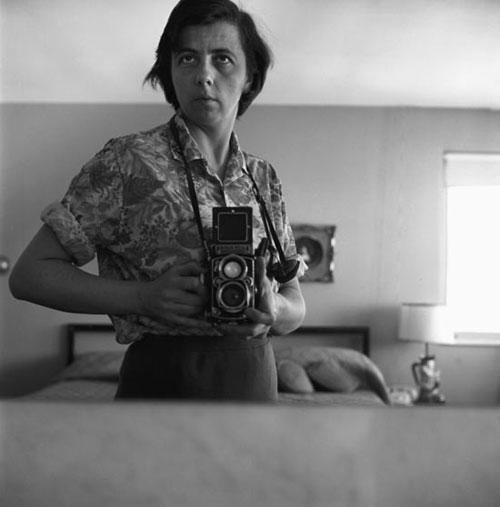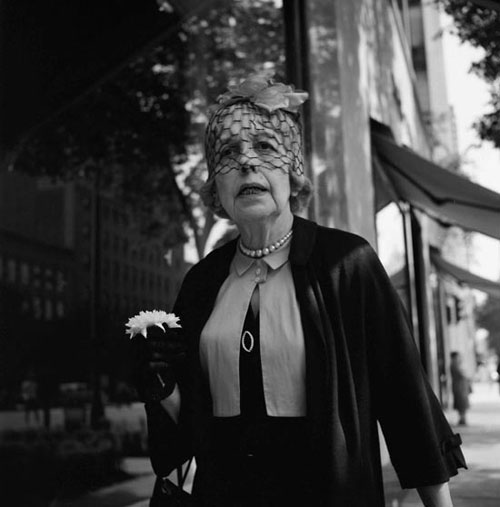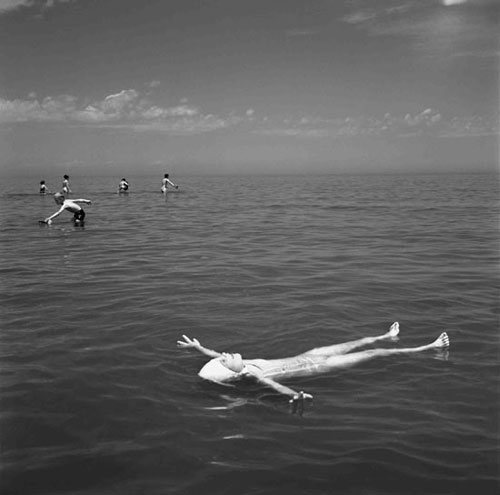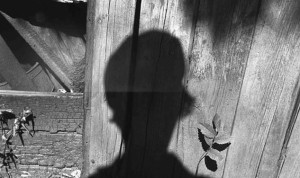Many moons ago, I was enrolled in a history of photography course at the University of Arizona. Our professor was fond of saying that if anyone in the class ever discovered a trove of photographs in our grandparents’ attic, we should consider having that found treasure appraised and use the proceeds to pay off our student loan debt. He was joking… mostly. But his statement and what it implies is telling, specifically of how easily we can be seduced by mystery and the possibility of monetary gain. I’m reminded of my professor’s advice when thinking about Vivian Maier.
Born in the Bronx in 1926 to immigrant parents, Maier began working as a nanny in Chicago beginning in 1956. Prior to that, she led a decidedly peripatetic existence, moving between various cities in Europe and the United States. Accounts of Maier’s personality and interaction with the world portray her as eccentric, highly intellectual, and possessed of strong opinions. Moreover, Maier is described as a pathologically private person who had little interest in those beyond the children she helped raise and immediate friends.

Maier’s life and subsequent death in April 2009 would have been unremarkable, were it not for the discovery of her secret passion — photography. You may have heard or read about the discovery that brought Maier and her work to light: John Maloof, described as a photographer, urban historian, and flea market enthusiast who is based in Chicago, paid $340 for the contents of Maier’s storage space after it fell into delinquency in 2007. Maloof’s find, which ultimately included in excess of 100,000 negatives, 3,000 prints, roll after roll of undeveloped film, camera and film equipment, home movies, and audio interviews, was represented by 100 images that he posted to Flickr. The positive response was overwhelming, and Maloof set about archiving and promoting the work of a woman who, it seems, tried very hard to keep her interests a secret.
On Friday, April 4, SF Camerawork will screen one of two films that portray the life and work of the reclusive artist. The Vivian Maier Mystery (2013) is a BBC production directed by Jill Nicholls that covers how this story unfolded and those who took on the job of bringing her work to the public eye. Not to be confused with the feature-length documentary film, Finding Vivian Maier, which was screened at film festivals in Berlin, Miami, and Toronto to enthusiastic crowds, the BBC production offers a quick look at Maier’s life as it was pieced together through Census Bureau data and tales told by those who claim to have known her intimately.

Maier’s was an unpolished, yet remarkable talent. So far as we know, she never studied photography or any other formal art discipline. Her work is the product of close observation of those she encountered on the streets of Chicago. As the film suggests, Maier’s view of mid-century American life overlaps with now-historical moments and social movements that shaped this country’s profile for better and for worse. She photographed a spectrum of experience, from the carefree abandon of child’s play to the isolation of addiction and homelessness, and the faces of those she captured linger in the mind like spirits. In this way, Maier reminds me of Helen Levitt, another gifted yet reclusive woman photographer whose understanding of the human condition was most comfortably explored behind her camera rather than in front of it. An exhibition of Maier’s photographs entitled See All About It is on view at the University of California Berkeley School of Journalism through May 1, 2014. The exhibition celebrates the gift of photographs to UCB from the Reva and David Logan Foundation.

The frenzied attention paid to Vivian Maier’s work and the circumstances of its discovery are understandable. Here is a previously unknown photographer who, despite shunning exposure of her work to audiences during her lifetime, emerges as a powerful documentarian of urban existence thanks to the work of a motivated novice sleuth. Add to that the scant details of her private life, and a proper, dig-your-teeth-in story unfolds. That high-flying enthusiasm runs to ground with a heavy thud, however, when other details are considered. John Maloof, and by extension, those associated with the movies, books, and exhibitions that feature Maier’s photographs, work within a system that has the potential to exploit previously unknown artists. In Maier’s case, the fame and, one would guess, financial gain that Maloof and the esteemed New York art dealer Howard Greenberg enjoy as the result of promoting her work so aggressively comes with few limitations. There is no pesky estate that Maloof must wrangle with in order to print images from contact sheets or undeveloped film rolls, a practice that strays into deep and murky ethical waters.


